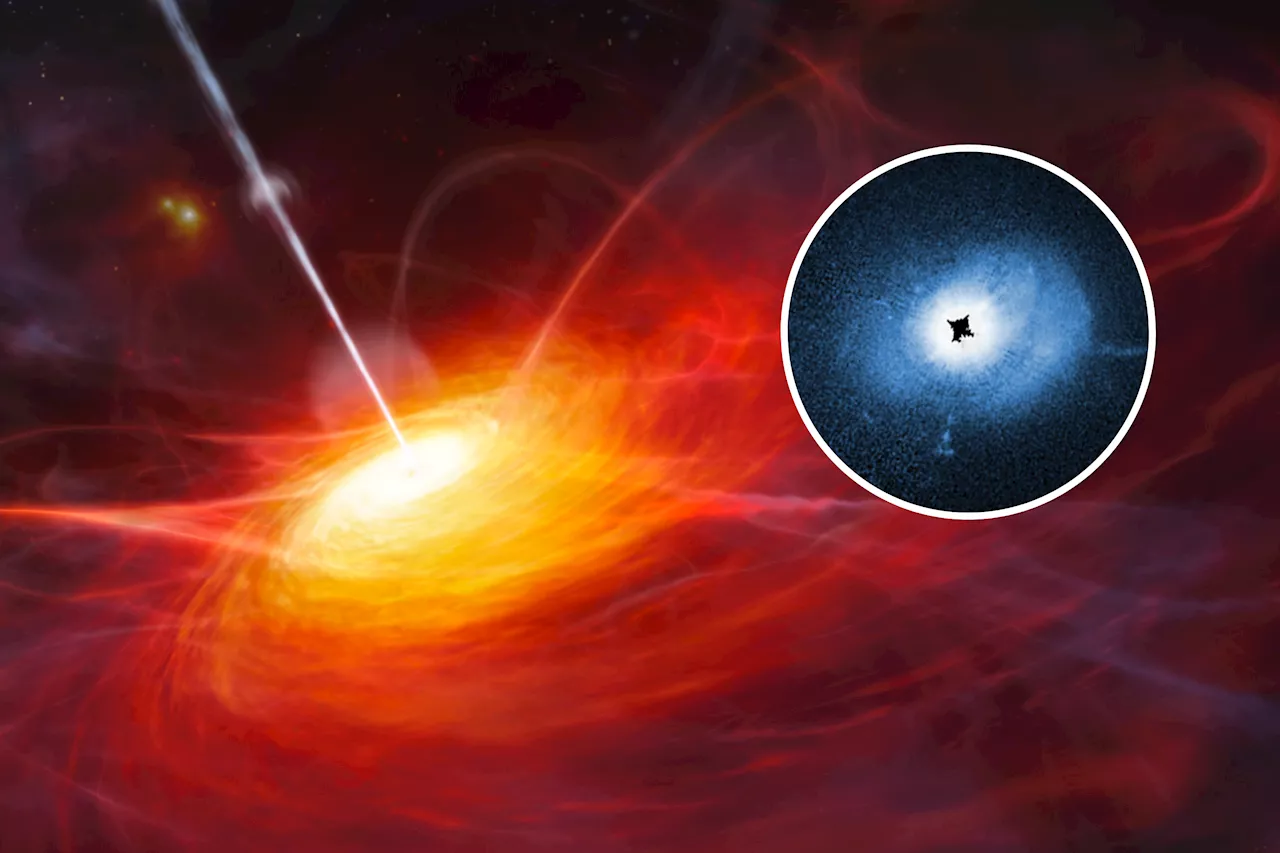NASA’s Hubble Space Telescope captured a stunning image of a spiral galaxy named NGC 2566, located over 76 million light-years away from Earth. The image helps astronomers study star formation and evolution in distant galaxies.
NASA’s Hubble Space Telescope has captured an image of a spiral galaxy over 76 million light-years away from Earth. The galaxy, known as NGC 2566 , is located in the constellation Puppis and features stars in the formation of spiral arms and a disk, giving it a resemblance to a cosmic eye looking towards Earth. NASA states that the imagery aids in the study of star clusters and active star-forming regions far from Earth.
‘The Hubble data are especially valuable for studying stars just a few million years old; these stars are bright at the ultraviolet and visible wavelengths to which Hubble is sensitive,’ the space agency said. ‘Using these data, researchers can measure the ages of NGC 2566’s stars, which helps piece together the timeline of the galaxy’s star formation and the exchange of gas between star-forming clouds and the stars themselves.’ Astronomers observe objects millions of light-years away as they looked millions of years ago due to the finite speed of light. This image of NGC 2566 depicts its appearance 76 million years ago, not its current state. Earth is approximately 320 light-years from the North Star, 26,000 light-years from the center of the Milky Way Galaxy, and 13.4 billion light-years from the oldest galaxy ever discovered. NASA notes that the imagery helps in studying star clusters and active star-forming regions far from Earth. It is believed that Hubble has captured images of hundreds of thousands of galaxies since its launch in 1990, all while orbiting approximately 320 miles above Earth’s surface. Missions conducted by astronauts and robots have extended the telescope’s operational lifespan beyond its initial schedule
Hubble Telescope Galaxy NGC 2566 Star Formation Space Exploration
United States Latest News, United States Headlines
Similar News:You can also read news stories similar to this one that we have collected from other news sources.
 Hubble Captures Unique Galaxy NGC 4694, Blurring Lines Between Spiral and EllipticalThe Hubble Space Telescope has captured a stunning image of NGC 4694, a galaxy located 54 million light-years from Earth. This galaxy presents a classification challenge as it exhibits characteristics of both spiral and elliptical galaxies. While spiral galaxies are known for their star-forming gas and distinct arms, elliptical galaxies are dominated by older, redder stars. NGC 4694's unique blend of features has astronomers intrigued.
Hubble Captures Unique Galaxy NGC 4694, Blurring Lines Between Spiral and EllipticalThe Hubble Space Telescope has captured a stunning image of NGC 4694, a galaxy located 54 million light-years from Earth. This galaxy presents a classification challenge as it exhibits characteristics of both spiral and elliptical galaxies. While spiral galaxies are known for their star-forming gas and distinct arms, elliptical galaxies are dominated by older, redder stars. NGC 4694's unique blend of features has astronomers intrigued.
Read more »
 Hubble Captures Monster Black Hole That May Be Gobbling GalaxiesThe telescope has offered an unprecedented view of a supermassive black hole at the center of a quasar as it munches material in space.
Hubble Captures Monster Black Hole That May Be Gobbling GalaxiesThe telescope has offered an unprecedented view of a supermassive black hole at the center of a quasar as it munches material in space.
Read more »
 Hubble Captures an Edge-On Spiral with Curve AppealThis NASA/ESA Hubble Space Telescope image features a spiral galaxy, named UGC 10043. We don’t see the galaxy’s spiral arms because we are seeing it
Hubble Captures an Edge-On Spiral with Curve AppealThis NASA/ESA Hubble Space Telescope image features a spiral galaxy, named UGC 10043. We don’t see the galaxy’s spiral arms because we are seeing it
Read more »
 Hubble Captures Stellar Eruptions Triggered by M87's JetA Hubble Space Telescope image reveals a 3,000-light-year-long plasma jet emanating from the supermassive black hole at the center of galaxy M87. This jet appears to induce stellar eruptions, with astronomers observing twice as many novae near the jet compared to other areas of the galaxy.
Hubble Captures Stellar Eruptions Triggered by M87's JetA Hubble Space Telescope image reveals a 3,000-light-year-long plasma jet emanating from the supermassive black hole at the center of galaxy M87. This jet appears to induce stellar eruptions, with astronomers observing twice as many novae near the jet compared to other areas of the galaxy.
Read more »
![]() Apple’s Text-to-Image AI ‘Image Playground’ Targets Fun, not PhotorealismApple launches its AI text-to-image generator, Image Playground. Apple's approach to generative AI so far has been quite limited.
Apple’s Text-to-Image AI ‘Image Playground’ Targets Fun, not PhotorealismApple launches its AI text-to-image generator, Image Playground. Apple's approach to generative AI so far has been quite limited.
Read more »
 Jaw-Dropping Image Captures Black Hole Jet Smashing Into Mystery ObjectA new image by the Chandra X-ray Observatory reveals an unidentified celestial object, dubbed C4, getting blasted by a jet of energetic particles, raising questions about its identity.
Jaw-Dropping Image Captures Black Hole Jet Smashing Into Mystery ObjectA new image by the Chandra X-ray Observatory reveals an unidentified celestial object, dubbed C4, getting blasted by a jet of energetic particles, raising questions about its identity.
Read more »
